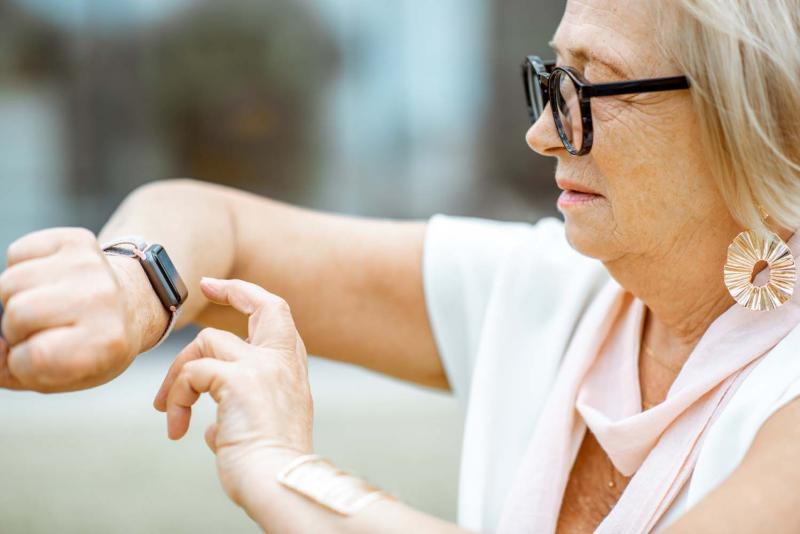Key points
- Some people working in or receiving aged care services express concerns about certain forms of technology that may impact human-to-human interaction.
- The most common concerns about the impact of technology on human interaction were in the context of robots.
- Some researchers suggest that an over-reliance on robots may result in deprivation of human contact which could negatively impact older adults’ health and wellbeing.
- Some studies addressed ways in which technology may improve human interaction and the quality of care provided. These technologies mostly consisted of ways to reduce staff workload.
Technology is becoming integral in many facets of health and social care, including aged care. The use of certain types of technology may improve the care delivered to older Australians by saving staff time and giving them more opportunities to engage with the people in their care. However, some concerns have been raised about particular forms of technology and how they may impact human-to-human interaction.
This evidence theme summarises one of the key issues we identified as part of a scoping review of research on human factors and technology in aged care. We identified five studies on this topic. [1-5] If you require more information on this topic, try using our one-click PubMed searches provided below.
A common theme in our review was the potential impact of technology on social connectedness and human interaction. Several studies and reviews highlighted a concern that the use (or overuse) of technology in aged care may happen at the expense of human-to-human interaction; this concern was usually raised in the context of robots. Many study participants (including care workers, older people, and families) expressed concerns that the use (or overuse) of robots may result in:
- Increased levels of loneliness [3]
- Greater social isolation [5]
- Older adults receiving less compassion [4]
- A decline in meaningful human relationships [5]
- Older adults not feeling valued. [4]
One study raised concerns about individuals’ need for human touch. [5] For some individuals (particularly those living with dementia), gesture and touch are often their most effective forms of communication. The authors suggested that over-reliance on robots may result in deprivation of human contact which could negatively impact older adults’ health and wellbeing. In interviews, care workers, older adults, and family members suggested that in many situations, technology is unable to replace human contact. [5]
Other studies raised concerns about the time care staff spent implementing or learning to use the technology, rather than providing direct care to or spending time with the individuals they care for. This was particularly true when it came to smartphone use. [1, 2] In one study, home care workers were provided with smartphones and an app to improve how care is provided (e.g., by confirming needed services and scheduling their work). [2] It was found that when care workers were pre-occupied with the new technology, they were less likely to greet the older adults and their families upon their arrival to the home. In addition, care workers reported that when they were using the smartphone, older adults would sometimes become frustrated. One care worker perceived that the workplace smartphone and app placed a barrier between them and the older adults they worked with. [2]
Some studies addressed how technology may be used to improve human interaction and the quality of care. These technologies mostly consisted of ways to reduce staff workload or faster ways to access relevant information. One study introduced a digital care management system which aimed to provide efficient access to up-to-date resident information for care home staff. [1] Both care home managers and residents’ family members reported that quality of care had increased since the implementation of the new system. This was reportedly due to both the quality of the information provided by the system (e.g., prompting timely care) and the reduced time spent retrieving and documenting information (meaning that staff had more time to spend with residents). One reported downside of the new system was that staff spent time on workplace smartphones in front of residents. Furthermore, some staff felt that the system interfered with their rhythm of care at times. [1]
The scoping review found several factors that may be important to consider when implementing technology in aged care. For example, service providers may benefit from:
- Considering whether the technology is supplementing or replacing care that is usually delivered by humans. [3-5]
- Working to understand the individual needs and perspectives of people in their care. While some may feel that technologies allow them to be more independent, some may struggle with less human connection. [5]
- Working closely with staff, older people, and families to determine the specific needs of your workplace. [1]
- Providing staff training on how to use the technology and allowing staff time to practice and feel confident before they need to use the technology in the field or during work hours. [2]
- Encouraging staff to be aware of the preferences of the individuals they care for about technology use. Some older adults may be comfortable with staff inputting data on a smartphone/tablet in their presence, but this may make others uncomfortable. [1, 2]
This evidence theme has been informed by the results of a scoping review intended to map the published research in this area. Our findings reflect the current state of the evidence which we note is limited in breadth and quality.
- Bail K, Gibson D, Hind A, Strickland K, Paterson C, Merrick E, et al. 'It enables the carers to see the person first': Qualitative evaluation of point-of-care digital management system in residential aged care. J Clin Nurs. 2023;32(1-2):174-90.
- Bensliman R, Casini A, Mahieu C. “Squeezed like a lemon”: A participatory approach on the effects of innovation on the well-being of homecare workers in Belgium. Health Soc Care Community. 2022;30(4):e1013-e24.
- Coco K, Kangasniemi M, Rantanen T. Care personnel's attitudes and fears toward care robots in elderly care: A comparison of data from the care personnel in Finland and Japan. J Nurs Scholarsh. 2018;50(6):634-44.
- Papadopoulos I, Ali S, Papadopoulos C, Castro N, Faulkes N, Koulouglioti C. A qualitative exploration of care homes workers' views and training needs in relation to the use of socially assistive humanoid robots in their workplace. Int J Older People Nurs. 2022;17(3):1-9.
- Tan SY, Taeihagh A, Tripathi A. Tensions and antagonistic interactions of risks and ethics of using robotics and autonomous systems in long-term care. Technol Forecast Soc Change. 2021;167.
Connect to PubMed evidence
This PubMed topic search is focused on research conducted in aged care settings (i.e., home care and residential aged care). You can choose to view all citations or free full-text articles.

